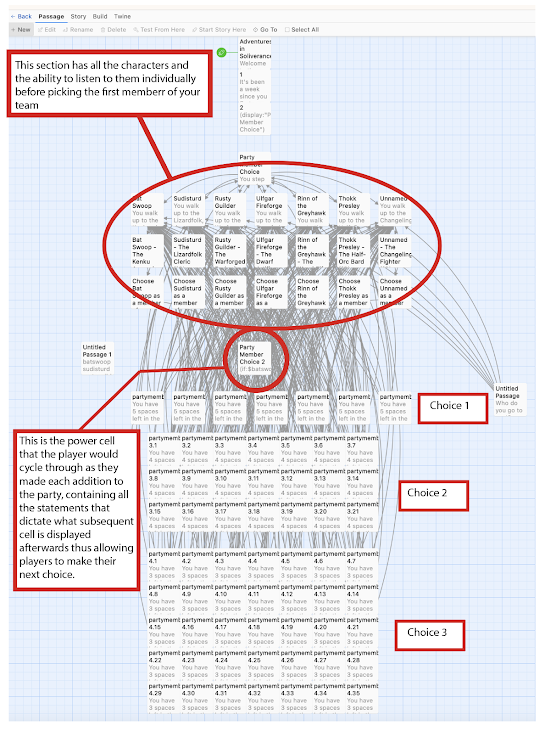After coming to a conclusion as far as the types of challenges I might face during production of a narrative-driven game using Twine and how best to overcome them whilst still retaining a level of choice for the player to keep them immersed and believing they are having an impact within the world I've created so that any changes I wish to impart on their behavior may be more successful I've moved forward into discovering ways in which to creative as compelling and believable natural conversation methods so this can be a strong factor in the way that players make their choices. As well as this, another full-time coursemate (Lance Muir) is looking at ways in which to produce 3D models of items of importance within fantasy games such as D&D stories through analyzing their descriptive elements, I suggested us working together since using descriptive elements within a narrative based fantasy game will be a large part of the production of my game, I could simply pass on my scene-setting elements to him like a live brief and see what he comes up with. At the same time, I can also illustrate these scenes with my traditional methods to analyze any differences and show how my descriptive scenes may be seen by players in different ways to tighten them up for a more cohesive experience from player to player.
Going forward I will analyze the game books produced by Wizards of the Coast for D&D as well as the highly popular series from both 'Critical Role' and 'Dimension 20' during their own campaigns, also looking at message boards and forums for public home-brewed stories to see what makes a successful scene-setting piece of work and how to improve my own writing for the game as well as trying my hand at concept art and illustration pieces for the characters and settings within my game "Adventures in Soliverance: The Tomb of the Last Alliance"
Below is an exert from my current iteration of the opening of the game setting the scene for the continent in which the game takes place as well as a little background lore that may influence the player's decisions as well as how they may perceive certain characters within the game.





















